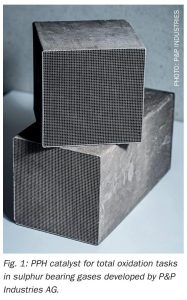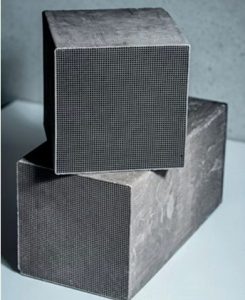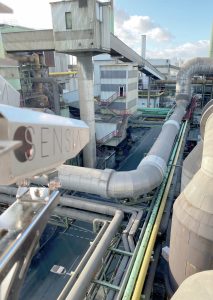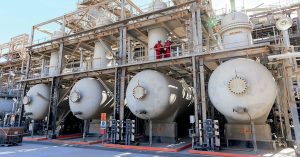
Platinum-catalysed conversion of sulphur species
Platinum-promoted honeycomb catalyst bricks offer function as total oxidation catalysts that convert all oxidisable species under appropriate temperature and oxygen conditions. P&P Industries presents a case for a H2S-rich gas stream – relevant to the fibre industry, Claus offgas treatment, and other chemical sectors.







